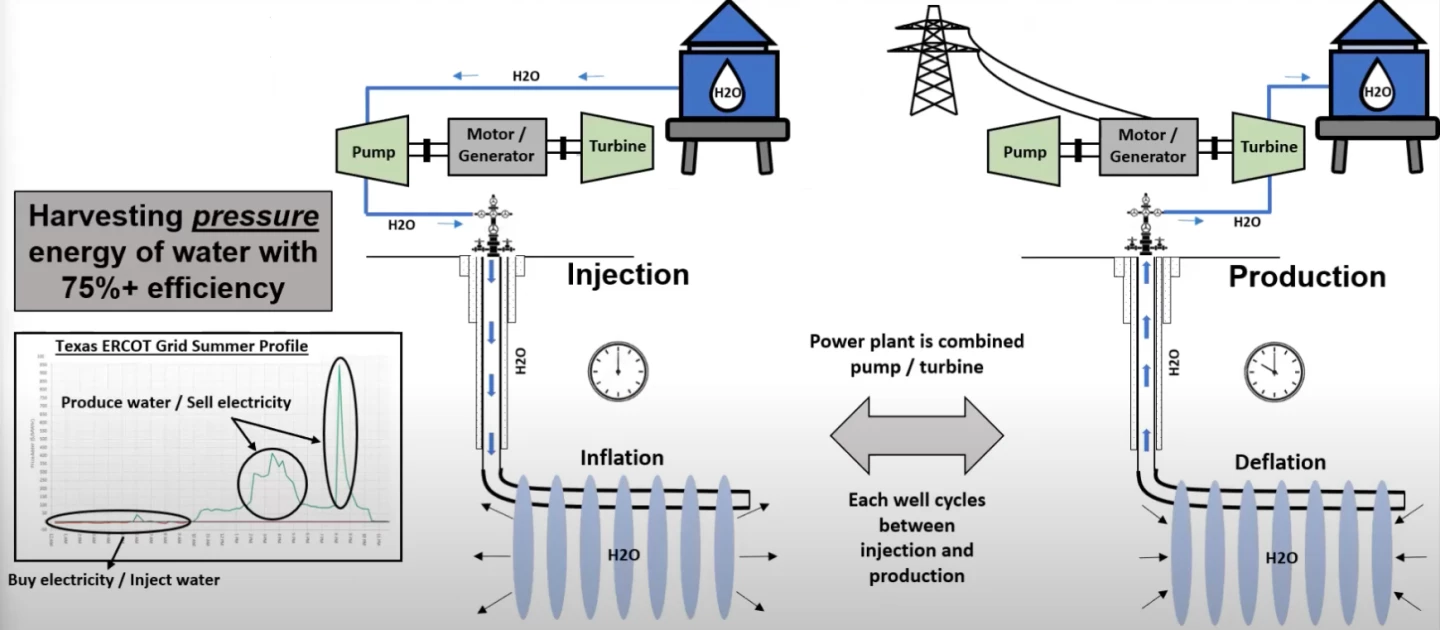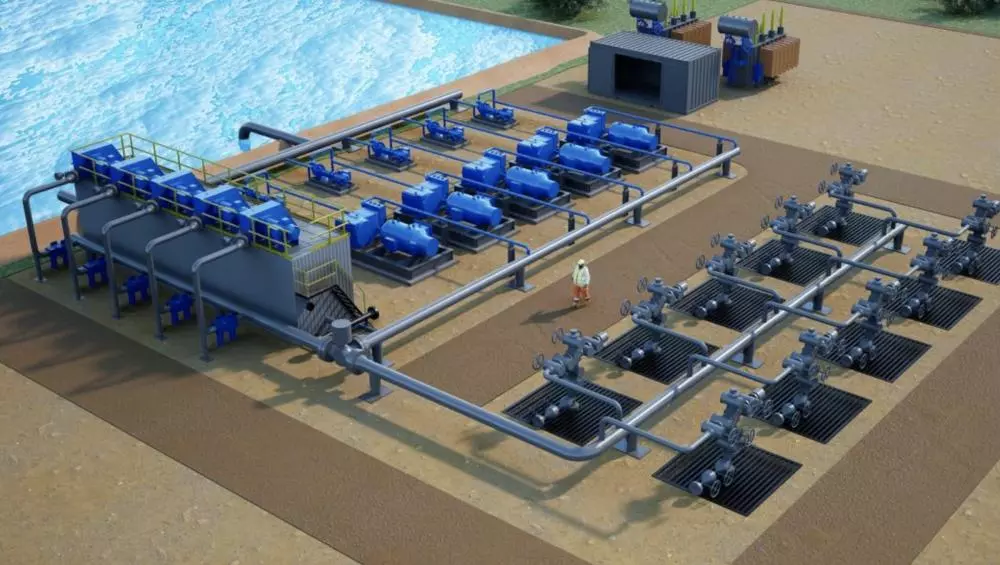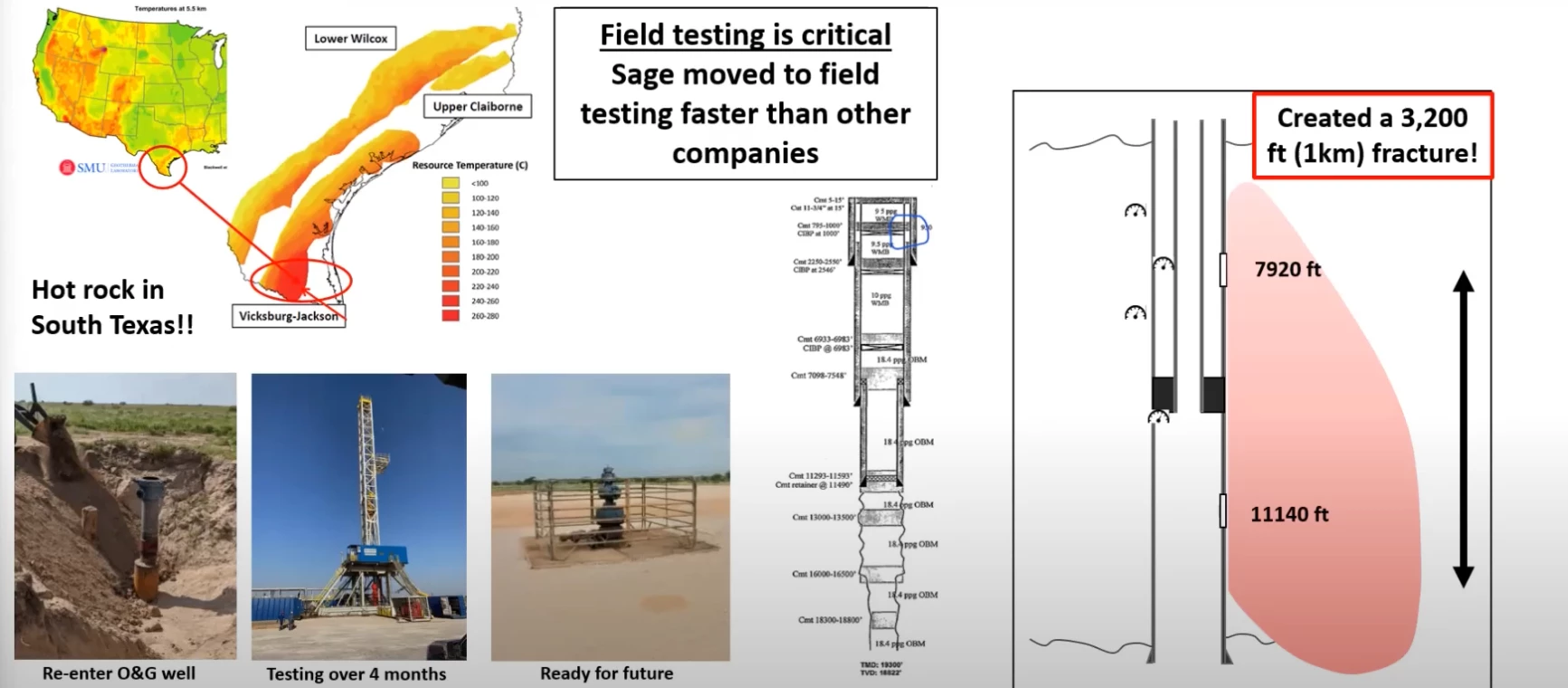Sage Geosystems has pioneered a new form of cheap energy storage that uses the Earth as a giant bellows, pumping water into underground fractures, then letting it squirt back up at 70% efficiency – or 200% efficiency if you also harvest heat energy.
The "huff & puff" method, as it's known, is adapted here from a similar technique that's used in oil production, where a fluid – often steam – is injected into a shale oil deposit and left there for several hours to heat the oil, reducing its viscosity and making it easier to pump out.
Sage, however, uses dense drilling mud, forced at high pressure into rock deep underground at disused oil wells, to push slim fractures apart, then pumps water in, again at high pressure, to keep the fractures "inflated." This is done using excess renewable energy collected during daylight hours, and then a valve is closed to lock the water in.

When it's time to recover the energy, it's as simple as opening the valve; the pressure from the earth all around the fracture squeezes it back together and the water is forced back up the pipes, where it can be run through a turbine to harvest electricity. Indeed, the same electric motor and pump that forced it down there in the first place become the turbine and generator that get the energy back out when the system runs in reverse.

This is the "EarthStore" system Sage has now tested using an old oil well in Texas, demonstrating a round trip efficiency of 70-75%, with measured fluid losses of just 1-2% and no detected induced seismic activity. A single well, says Sage, can generate around a 3-megawatt maximum output this way if it's used as a load-following fast release system, or it can release energy in a more measured way to provide 18-odd hours of power through the night when solar isn't generating.
But if you've got access to old oil production shafts, fairly deep in the Earth, there's another benefit: heat. A huff & puff system like EarthStore could be profitable enough as a grid-level or local energy storage system, but once you start factoring heat into the equation, it starts looking extremely compelling.
The Earth warms up the deeper you go, and it's relatively easy to get deep enough for 180-220 °C (350-430 °F) temperatures. It's not typically cost-effective to harvest that geothermal energy, but the huff & puff energy storage system significantly changes the numbers.
The EarthStore system packs water in with hot rock, with lots of surface contact, and locks it down there. So when it's released, not only does the heat increase the pressure with which the water rushes back up, driving the turbine harder, there's also the opportunity to harvest that heat by running it through a heat exchanger, such that you end up getting more energy out of your "Earth battery" than you put in.
That's not the end of it, either; Sage proposes that if multiple EarthStore bores are sunk close to one another, saving money since the drilling equipment and whatnot don't need to be disassembled for transport, you can group them up to operate as multi-cylinder heat/pressure engines.

In this kind of array, you'd release the hot water from one underground reservoir, cool it using a heat exchanger to harvest electricity, and immediately store it by pumping the cool water straight down the well next door. No above-ground fluid storage is required, and the process can run back and forth between these two cylinders.
Sink 18-20 of these puppies at a single site, and you've got yourself a 50-megawatt renewable energy storage plant that effectively outputs twice the energy you put in, according to Sage. You can look at it as enhanced energy storage, or as a way to make relatively shallow geothermal energy much more economically feasible, but it's a very neat idea.
Sage says the EarthStore solution alone should be cheaper in terms of Levelized Cost of Storage (LCoS) than lithium-ion batteries or pumped hydro – indeed, as a way to firm the power grid during peak periods, it promises to be cost-competitive with a gas-fired peaker plant.
The Texas pilot program has now wrapped up after six months. It made use of an exploratory oil well, using perforations at 7,920 and 11,140 feet (2,400 and 3,400 m) deep to create a 3,200-ft (1-km)-high, 200-300-ft (60-90-m)-wide fracture.

The walls of this fracture were only 0.1-0.2 in (2.5-5 mm) apart, but by pumping water in and releasing it, and constantly maintaining enough pressure in the system to prevent the fracture from closing, the volume of the fracture expanded and contracted by a factor of two, fluctuating between 7,500-15,000 barrels (1.2-2.4 million liters, 315,000 to 630,000 gallons).
“We have cracked the code to provide the perfect complement to renewable energy, yielding reliable alternative baseload in a manner that is cost competitive with lithium-ion batteries and natural gas peaker plants,” said Cindy Taff, CEO of Sage Geosystems, in a press release. “The opportunities for our energy storage to provide power are significant – from remote mining operations to data centers to solving energy poverty in remote locations. We can interconnect with power grids or develop island/microgrids with a cleaner energy solution that is proven and ready to scale.”
With investment on board already from drilling specialists Nabors Industries and cleantech VC fund Virya, Sage is looking to raise a further US$30 million in its current Series A round, and get on with proving, commercializing, optimizing and scaling the system.
Check out a video below.
Source: Sage Geosystems











